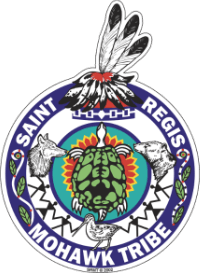1.01.100 Tribal Laws, Acts and Ordinances
As summarized below, the procedure for enactment of Tribal Ordinances is as follows:
(a) Formal enactment of Tribal Laws, Acts or Ordinances (together "Ordinances") shall be evidenced by the adoption of a Tribal Council Resolution.
(b) An Ordinance may be proposed by the Council, any Tribal Member or any Department or Program of the Tribe. (A member may also propose an ordinance via the referendum process, refer herein to Section 1.01.060(a)).
(c) The proposed ordinance and the review process, including provisions for review and comments by Members, is set forth in the following procedure:
(1) Initial review by the Council shall be conducted within thirty (30) days.
(2) The Tribal Clerk shall issue a notice to the Tribal Membership that such legislation is being presented for comment. The date of this notice shall commence the thirty (30) day comment period. Comments may be presented at public meetings, or in writing to the Tribal Clerk's Office.
(3) Following the draft comment period, Tribal Council shall have at least thirty (30) calendar days to consider the comments received and create a final draft of the proposed legislation and shall provide responses to the comments made in the form of a response summary.
(4) Once a final draft is complete, it shall be submitted to the Tribal Clerk, who shall issue a notice to Tribal Membership that such legislation is being presented for final action.
(5) Upon the conclusion of the final thirty (30) day notice period, Tribal Council may take action to enact the Ordinance when at least two of three Chiefs vote to adopt the proposed legislation.
(d) In the event that Tribal Council elects to put the pending Ordinance to a referendum vote or adoption of the Ordinance requires a referendum vote pursuant to Section 1.01.060(b)(2), or the Ordinance has been put forward through the Referendum process, the Referendum Election process shall be followed.
(e) If the Referendum results in a vote to accept the Pending Ordinance:
(1) The Election Board will ensure the Appeal Process of the Referendum Election process, is adhered to.
(2) The Election Board will certify the Referendum Election Vote and present the certified vote to Council.
(3) The Pending Ordinance is enacted and Tribal Council shall take all steps necessary to implement the Ordinance.
(f) If the Referendum results in a vote to not accept the Pending Ordinance:
(1) The Election Board will conduct the Appeal Process of the Referendum Election process.
(2) The Election Board will certify the Referendum Election Vote and present the certified vote to Council.
(3) The process is terminated and the Pending Ordinance and a copy of the certified vote is presented to the drafters of the Pending Ordinance.
